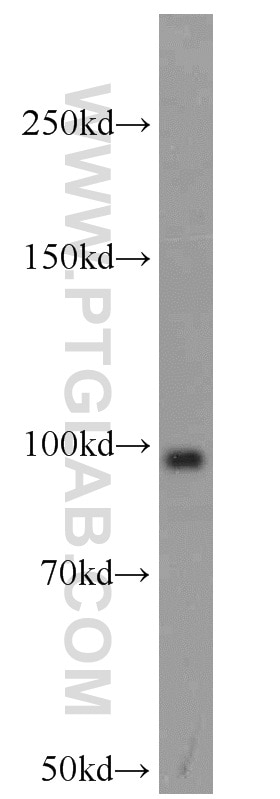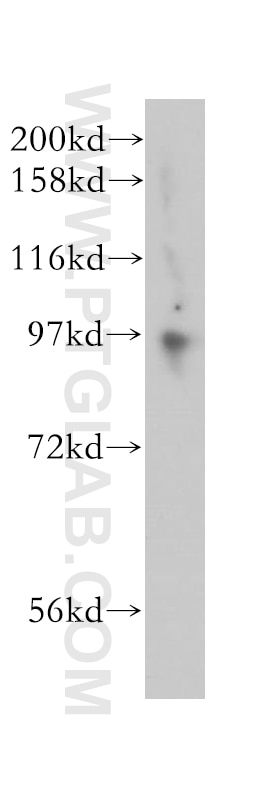Validation Data Gallery
Filter:
Tested Applications
| Positive WB detected in | MCF7 cells, mouse ovary tissue |
Recommended dilution
| Application | Dilution |
|---|---|
| Western Blot (WB) | WB : 1:500-1:1000 |
| It is recommended that this reagent should be titrated in each testing system to obtain optimal results. | |
| Sample-dependent, Check data in validation data gallery. | |
Published Applications
| KD/KO | See 2 publications below |
| WB | See 5 publications below |
Product Information
14983-1-AP targets KAT2A/GCN5 in WB, ELISA applications and shows reactivity with human, mouse samples.
| Tested Reactivity | human, mouse |
| Cited Reactivity | human, mouse |
| Host / Isotype | Rabbit / IgG |
| Class | Polyclonal |
| Type | Antibody |
| Immunogen | KAT2A/GCN5 fusion protein Ag6940 相同性解析による交差性が予測される生物種 |
| Full Name | K(lysine) acetyltransferase 2A |
| Calculated molecular weight | 94 kDa |
| Observed molecular weight | 94 kDa |
| GenBank accession number | BC032743 |
| Gene Symbol | KAT2A |
| Gene ID (NCBI) | 2648 |
| Conjugate | Unconjugated |
| Form | Liquid |
| Purification Method | Antigen affinity purification |
| UNIPROT ID | Q92830 |
| Storage Buffer | PBS with 0.02% sodium azide and 50% glycerol , pH 7.3 |
| Storage Conditions | Store at -20°C. Stable for one year after shipment. Aliquoting is unnecessary for -20oC storage. |
Publications
| Species | Application | Title |
|---|---|---|
Mol Cell Proteomics Acetylproteomic analysis reveals functional implications of lysine acetylation in human spermatozoa (sperm). | ||
Mol Cell Proteomics Regulation of acetylation restores proteolytic function of diseased myocardium in mouse and human. | ||
Biochem Biophys Res Commun The oncoprotein HBXIP promotes migration of breast cancer cells via GCN5-mediated microtubule acetylation.
| ||
Mol Med Rep Fr‑HMGB1 and ds‑HMGB1 activate the kynurenine pathway via different mechanisms in association with depressive‑like behavior. |

